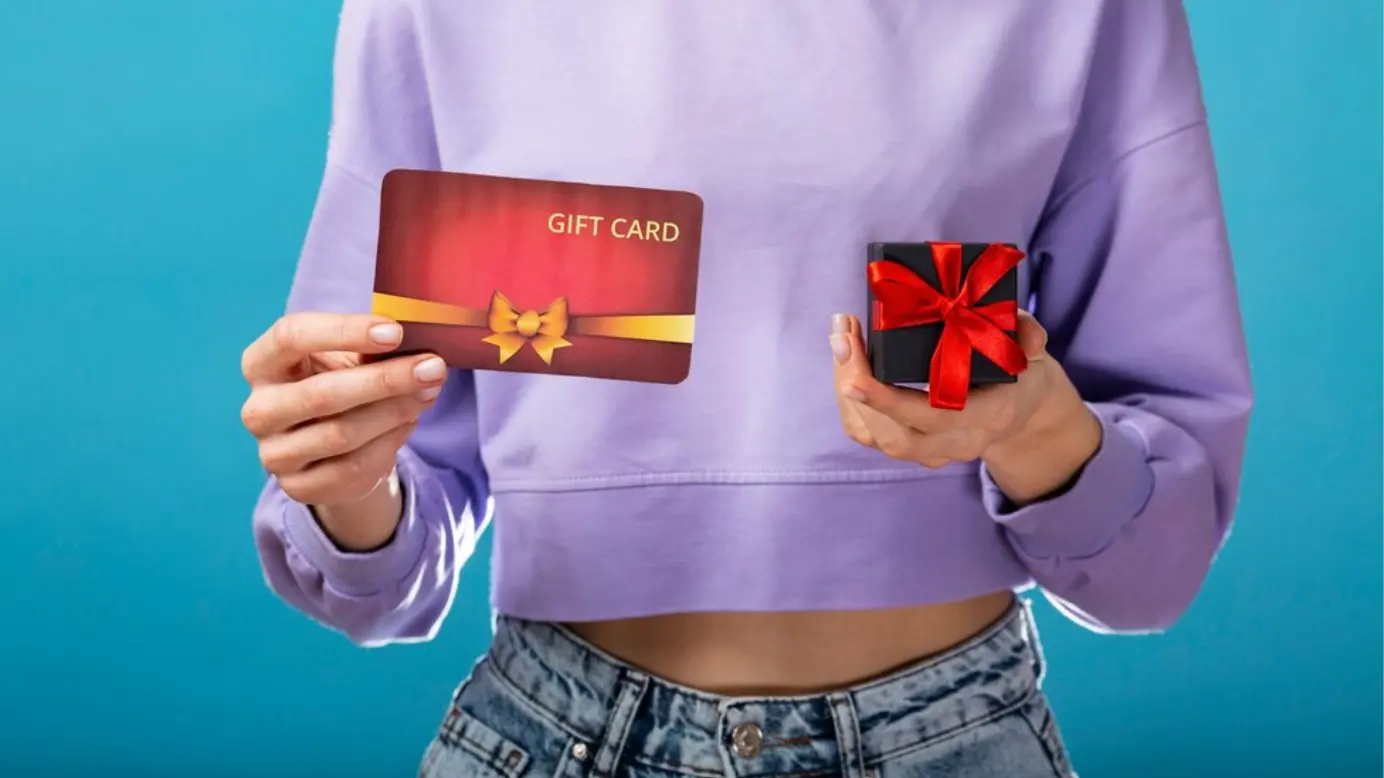On this page
When it comes to inspiring strong customer loyalty in the retail industry, very few seem to do it, as well as Costco. The Costco Anywhere Visa Card by Citi is one of the good examples of loyalty card programs that made it an obvious choice for Costco members to sign up.Launched in June 2016, the Costco Anywhere Visa Card had 86.7 million card holders. The numbers gradually increased over the years and jumped to 127.9 million users in 2023, who continue to leverage the benefits that come from it.
Costco's annual report showed a high member renewal rate of 93% in the U.S. and Canada and 90% globally in 2022. Moreover, Costco gained 2 million cardholders, including 1.3 million paid members, by adjusting their calculation method. In 2023, Costco's brand value reached 53.4 billion U.S. dollars.This success raises the question: What makes Costco's loyalty card program so effective that it turned out to be the fourth most valuable retail brand3 globally? This blog will showcase the efficacy of loyalty card programs and how they can help you drive loyalty from your customers.
What are loyalty card programs?
Loyalty card programs refer to marketing strategies that businesses use to encourage repeat purchases among consumers. The goal is to build long-term relationships with customers, so as a result, they offer incentives like points, discounts, or rewards to customers who frequently shop with the business. If done right, a loyalty card program may help in:
- Increase customer retention and loyalty,
- Get higher sales and revenue
- Improve customer behavior analysis and targeted marketing
- Reduce advertising costs
- Make stronger customer relationships and brand differentiation.
Let’s take a look at how efficient loyalty card programs for small businesses turn out to be.
- A Landing Tree survey has found that 80% of American buyers have become members of at least one loyalty program.
- A McKinsey study has shown that customers who are already a part of the loyalty program are 59% more likely to choose the brand they are loyal to than the competitors. In fact, 43% of consumers are more likely to buy weekly.
- The same study has shown that 62% of consumers associated with the loyalty program are more likely to spend on their respective brands.
- An Oracle report suggests that 66% of Gen-Z consumers desire personalized recommendations while browsing in-store.
- The same report also showed that 50% of them are willing to share their data to receive personalized experiences and rewards.
- A Forbes study has shown that 70% of Gen-Z consumers belong to loyalty programs and that they are willing to pay more to get extra rewards and exclusive perks.
How do loyalty card programs work?
Here's a breakdown of the key elements for the gifts and loyalty card program:
- Sign-up process: Customers typically join a loyalty program by providing basic information in-store or online.
- Receiving the card: Traditionally, a physical card is issued, but digital memberships are becoming increasingly common.
- Purchase tracking: Purchases are linked to the customer's account, accumulating points or rewards based on program rules.
- Redeeming rewards: Customers can exchange their points for discounts, free items, or other benefits.
- Points conversion: Programs may have a point-based loyalty program where a certain number of points translates to a specific reward.
- Tiered benefits: Some programs offer rewards or benefits (like exclusive discounts) for reaching higher spending tiers.
- Data collection and usage: Programs track purchase history, allowing businesses to understand customer preferences.
- Targeted marketing: This data is used to send personalized offers and promotions, further engaging customers.
5 Unique loyalty card program ideas: Exclusive and personalized loyalty rewards
Here are some creative loyalty card program ideas to help boost customer retention and engagement for your business:
1. VIP access and exclusivity
Offer a VIP loyalty tier that gives customers access to exclusive events, like private sales, product launches, or special brand experiences. For instance, invite your most loyal customers to an exclusive event where they can meet product designers or influencers related to your brand. This exclusivity creates a sense of belonging and strengthens the emotional bond between customers and your brand.
2. Personalized experiences
Go beyond rewards by offering personalized experiences based on customers’ preferences or purchasing history. For example, a fashion brand could offer a private shopping session, while a spa could provide a custom-tailored relaxation package. This type of reward shows customers that you value them personally and creates memorable experiences that go far beyond just a product or discount.
3. Experiential travel or getaways
For high-spending customers or those who hit top-tier loyalty levels, offer an experiential reward like a weekend getaway, travel packages, or a unique experience (e.g., a cooking class with a renowned chef). This high-value reward makes customers feel truly appreciated and provides them with a lifetime memory, which strengthens brand loyalty.
4. Behind-the-scenes access
Provide your loyal customers with behind-the-scenes access to your business or product development process. For example, you could give customers a virtual tour of your production facilities, invite them to attend brainstorming sessions, or let them test new products before they launch. Offering a peek behind the curtain enhances trust and makes customers feel like they are part of your brand’s journey.
5. Charitable or community-based rewards
Allow customers to use their loyalty points for charitable causes, such as funding a community initiative or supporting a nonprofit you partner with. Customers could even have the option to vote on the causes they want to support, giving them a sense of agency and connection with the brand’s social responsibility efforts. This adds value to their loyalty and makes them feel like their purchases are contributing to something greater.
These ideas focus on creating memorable, meaningful experiences that go beyond material rewards, strengthening customer loyalty and fostering deeper emotional connections.
Loyalty card programs for small businesses
Implementing a loyalty card program can significantly enhance customer retention for small businesses. According to a 2022 survey, 70% of Americans consider loyalty programs a leading factor in their brand loyalty.
Key considerations:
- Digital integration: Transitioning to digital platforms not only streamlines operations but also provides valuable customer insights. For example, Deka Lash implemented a robust digital loyalty program across four locations, enhancing customer engagement and retention.
- Personalized rewards: Tailoring rewards to customer preferences increases engagement. A survey revealed that 75% of consumers favor companies offering loyalty and reward programs.
- User-friendly platforms: Utilizing accessible loyalty program software simplifies management. Platforms like Stamp Me have been successfully adopted by businesses such as Lux Nails Bar to retain customers and boost engagement.
- Clear communication: Clearly outlining the benefits and mechanics of the loyalty program ensures customers understand how to participate and what they stand to gain.
How to implement the best loyalty card programs?
Here's how to implement a best-in-class loyalty card program for small business:
- Come up with clear roles: Determine what you want to achieve with your program. Is it to increase sales, drive repeat business, or gather customer data?
- Analyze the customer base: Understand their preferences and buying habits. This will help tailor rewards and program features to resonate with them.
- Build a structured program: Design a program that's easy to understand and participate in. Consider tiered systems with increasing benefits for loyal customers.
- Include rewards in it: Offer rewards that truly motivate your customers. This could include discounts, exclusive products, or early access to sales.
- Don't forget the consumer experience: Ensure seamless integration of the program at all touchpoints, online and in-store.
- Make it easy to use: Make the program user-friendly, with a clear and intuitive design for enrollment, points tracking, and reward redemption.
- Pick your marketing channels: Promote your program effectively to generate excitement and encourage customer participation.
- Track the success: Monitor key metrics to measure program performance and make data-driven adjustments to optimize its effectiveness.
- Security first: Ensure all customer data is protected with robust security measures and compliance with relevant regulations.
Let us examine two impactful case studies to explore successful implementation strategies. These examples can help us identify connections between methodology and positive outcomes.
Case studies
Following are the two case studies for a better understanding of the matter.
1. Macy’s records 3.5 million sign-ups for its bronze loyalty card program
Macy's, a major American department store chain founded in 1858, is a fan favorite because of its exclusivity, and tiered loyalty card program that exposes its consumers to a vast opportunity in shopping. Macy's recorded a whopping 1.8 million overall on the highest consumer loyalty score in the United States in the 1st quarter of 2022.
Understanding the Macy's card rewards
Macy's card rewards program comes with three tiers for those who are cardholders. A cardholder would automatically become a silver member upon registering.
However, those who don't have a credit card can become a Bronze member. Apart from Silver, and Bronze tier, there are two more tiers: Gold and Platinum. These levels generally get assigned to the cardholders based on the amount they spend annually with the brand.
The tiers in Macy's loyalty card program denote the exclusivity of the member and open them to multiple exclusive benefits. The users get points for each penny they spend at Macy's. Silver status earns 2 points per $1, Gold status earns 3 points per $1, and Platinum status earns 5 points per $1. A user can redeem the points for Star Money to use at Macy's, excluding gift cards, services, and fees.
Apart from the tiered reward system integrated into Macy's loyalty card, a user will instantly get 20% off on purchases, excluding certain items. The additional perks include free shipping set at different spending levels, birthday surprises, and early access to special offers and events. The Macy's Card also comes in two versions: a closed-loop card for Macy's purchases only and an open-loop American Express card for use anywhere American Express is accepted.
However, there is a difference between these two cards. A user can use the Macy's American Express card at more places outside the brand's stores. This card can earn the users 3% cashback in rewards at restaurants and food delivery, 2% cashback at gas stations and supermarkets, and 1% cashback anywhere outside of Macy’s.Moreover, 1,000 points here would be equal to $10 Star Money. Such a rich loyalty card has added much value to the program itself and attracted customers all over the world.
Retailing at its best
Macy's loyalty card program is beyond offers, perks, birthday offers, and extra savings. As members advance through the tiers, they get free shipping and early access to tickets. Such a stance not only makes the program to be experiential, but unique to what most retailers are giving to their consumers. As a result, Macy's has seen:
- In the last quarter of 2021, over 3.5 million new members joined the bronze tier of the Star Rewards program.
- Massive brand awareness, at 88% in the United States in 2024.
- Favoritism over others as 34% of American customers confirm that they prefer Macy's.
2. American Express records 141 million users at the end of 2023 mastering CX and loyalty card program
Amex, popularly known to many as American Express has managed to rank on top in customer loyalty since 2014, and why wouldn't it? They have been at it since the 1990s.Their journey to create a loyal customer base started in 1991 with a single loyalty program known as Membership Rewards. This program allowed cardholders to get points for each dollar they spent on qualifying American Express cards.These points can later be exchanged for a variety of rewards. Pretty simple, but this inherent simplicity led to building strong customer engagement and loyalty, which few other brands can match. AMEX has managed to create exceptional customer engagement and loyalty with its rewards program. The question is, how did they achieve this?
Understanding the AMEX loyalty card program
AMEX cards get preference for travel, big purchases, and business expenses that will be reimbursed to the consumers. Every time an AMEX card is used, customers earn rewards that they can then use for other purchases. Many companies use this cash-back reward model.Generally, American Express cards offer a combination of financial benefits, rewards programs, travel perks, and exclusive offers. On top of that, it also prioritizes security features, and dedicated support to elevate your lifestyle. Specific benefits vary by card type. An AMEX consumer gets,
- To make purchases now and pay later. You can convert purchases of rupees 5,000 and above into EMIs with low interest rates and no paperwork.
- To earn Membership Rewards points on every purchase. The cardholders can redeem the points for a variety of rewards like travel, shopping, dining, and more. In addition to this, some cards offer bonus points for specific categories like online shopping, dining, etc.
- Travel benefits like complimentary airport lounge access, and hotel discounts. They can also redeem points for flights and hotel stays, and transfer points to partner frequent flyer and hotel loyalty programs.
- Access to exclusive offers and experiences across travel, dining, retail, and wellness. This includes curated dining experiences, retail discounts, and spa privileges.
- Security features like account monitoring, online safety protection, and fraud alerts protect you when making purchases.
- To build the AMEX credit score. This feature makes it easier to get future loans.
- Dedicated 24/7 customer support via phone, email, text, and online to assist you anytime.
Building loyalty at each swipe
While the benefits that a customer gets from the features of an AMEX card are enough to attract consumers, it is the experience the card has managed to generate that keeps them loyal. Amex has meshed its loyalty card program with customer experience to ensure retention. They did it by:
- Making the sign-up process and the redemption of rewards easier. This includes allowing customers to use points to pay off AMEX balances, get gift cards, book travel, and make online purchases. The psychology behind this is that the easier the card is to use, the more customers will use it for regular purchases to get points.
- Offering a variety of reward options that the customers want. They curate the data and personalize the experience of each customer. This move has assured that customers can find rewards they want and will use. This not only adds value to the loyalty value but creates a value proposition for them that they can stand for in the longer run.
- Creating a community. AMEX offers exclusive deals, perks, premium benefits, and more to create a more diverse yet distinct community.
Results
AMEX has shown the industry that the key to driving customer loyalty and engagement lies in making the customer experience easy and building a community through the exclusive loyalty program. As a result, AMEX
- Increased customer spending on its products by approximately 8-10%. The goal was to reinforce product benefits through Relationship Care. So, customer satisfaction improved substantially due to the Relationship Care program.
- In 2020, American Express cardholders spent a significant amount, $139.9 billion, using cards issued by partnering companies.
- In 2021, the United States was a key market for American Express credit cards. Nearly half of all American Express cards issued that year were for U.S. customers.
- Wall Street revealed that over 141 million active Amex card users were there at the end of 2023.
Best practices to learn from Macy’s and American Express’ loyalty card programs:
Here are the best practices that Macy's, and AMEX loyalty card programs implemented to make their initiatives a huge success:
1. From Macy's Loyalty card program, we learned:
- To create a tiered loyalty program for engagement.
- To include experiential benefits like early access to tickets.
- To prioritize the customer experience, from sign-up to redemption.
2. From the American Express loyalty card program, we learned:
- To offer a combination of financial benefits, rewards, travel perks, exclusive offers, security features, and dedicated support.
- To focus on CX and its improvement. The better the customer experience, the longer your consumers will stay.
- To make the loyalty program clear, concise, and scalable.
- To create a sense of community through exclusive deals, perks, and premium benefits.
- To tailor rewards and offers to individual customers.
Leading bank boosted customer engagement by 146% with a seamless loyalty solution
A leading financial institution in Qatar partnered with Loyalife to revamp its customer engagement and loyalty program, driving a 146% increase in customer engagement. This success was powered byLoyalife, which seamlessly integrated with the bank's existing systems and offered personalized features to enhance the customer experience.
The challenge
With a competitive banking market, the institution faced pressure to:
- Increase customer acquisition.
- Deepen engagement across product categories.
- Drive repeat transactions and long-term loyalty.
- Provide a seamless, integrated experience with existing banking platforms.
The solution
Loyalife enabled the bank to create a personalized loyalty program across various products:
- Personalized Loyalty Experience: Tailored loyalty across credit cards, debit cards, internet banking, and financing options.
- Seamless Redemption: A mobile-friendly portal for easy login and redemption via Single Sign-On (SSO).
- Diverse Reward Choices: Customers could choose from a wide range of rewards, including gift vouchers, electronics, travel rewards, and more.
- Mobile-First Design: Optimized for mobile, providing customers with 24/7 access to rewards.
Results
The partnership with Loyalife exceeded expectations:
- 146% increase in customer engagement.
- 170% growth in transaction volume.
- 62% expansion of the user base within 22 months, driven by the appeal of the loyalty program.
How Loyalifecan elevate your loyalty card program
Loyalife empowers businesses to create loyalty card programs that truly engage customers and drive results. With Loyalife, you can design flexible point systems, offer dynamic rewards, and seamlessly manage program rules—all tailored to your specific needs. The platform simplifies customer segmentation, enabling you to craft personalized offers that boost retention and increase customer lifetime value.
Key benefits of Loyalife:
- Customizable loyalty engine: Create flexible loyalty card programs with unique point accrual rates, tiered memberships, and diverse redemption options like gift cards, cashback, or exclusive perks, ensuring every customer feels valued.
- Personalized campaigns: Leverage detailed customer insights to launch targeted marketing campaigns. Send bonus point promotions, early access to sales, or exclusive discounts via email, SMS, or in-app notifications to keep customers engaged.
- Seamless API integration: Connect with CRMs, POS systems, and payment gateways to ensure a smooth and unified experience. Automate data synchronization for accurate tracking of customer activities and reward fulfillment.
Start building loyalty programs that create lasting connections with Loyalife. Discover Loyalife and take your customer engagement to the next level!
Conclusion
Loyalty card programs are important for businesses as they help retain loyal customers. 90% of American consumers have claimed that they are willing to share their personal information if they receive personalized loyalty benefits. It goes on to show the power a loyalty program holds in the business.However, only offering the customers what they want will not cut it, what you need to maximize your loyalty program is Loyalife. The Loyalty Business Management System is a comprehensive platform designed to help enterprises build, manage, and scale customer loyalty programs effectively. It can help you:
- Automate many aspects of program management, such as tracking customer purchases and issuing rewards.
- Save time and reduce automation and analysis errors.
- Create personalized rewards and offers based on customer data like purchase history and demographics. This improves customer engagement and loyalty.
Integrate Loyalife platform with your everyday tool and avail of seamless communication, real-time reporting, and more to build an ever-growing customer base.
FAQ's
1. How does a loyalty card program work?
Customers sign up for a loyalty card, make purchases, and earn points or rewards based on the program's rules. These points can later be redeemed for discounts, free products, or other benefits.
2. Why should my business have a loyalty card program?
Loyalty programs encourage repeat purchases, increase customer retention, and provide valuable data about customer preferences and buying behaviors.
3. How can I create a successful loyalty card program?
Focus on offering meaningful rewards, ensuring easy participation, providing personalized offers, and using technology to track and analyze customer engagement.
4. What types of rewards can be included in a loyalty program?
Rewards can include points, discounts, free products, exclusive access to events, cashback, or tiered benefits like VIP memberships.
5. How do I track loyalty program participation?
Use a loyalty management platform like Loyalife to track customer activities, points, and rewards in real-time through automated systems and integrated dashboards.
6. Can a loyalty card program be customized for my business?
Yes, loyalty programs can be tailored to your business model, offering customized point systems, rewards, and engagement strategies.
7. What industries benefit most from loyalty programs?
Loyalty programs work well in retail, hospitality, food and beverage, travel, e-commerce, and even service-based industries like fitness or salons.
8. How do loyalty card programs improve customer retention?
By rewarding repeat purchases and offering personalized incentives, loyalty programs make customers feel valued, increasing the likelihood of continued business.
9. What is the cost of implementing a loyalty program?
Costs depend on the platform, features, and scale of the program. Platforms like Loyalife offer scalable solutions for businesses of all sizes.
10. How can I promote my loyalty card program?
Use email marketing, social media, in-store signage, and website banners. Offer sign-up bonuses or introductory discounts to attract participants.
11. What role does technology play in loyalty programs?
Technology simplifies program management, automates reward tracking, provides customer insights, and enables seamless integrations with CRMs and POS systems.
12. Can loyalty card programs integrate with my existing systems?
Yes, most modern platforms, including Loyalife, integrate with CRMs, POS systems, and payment gateways to streamline operations.
13. How can I measure the success of my loyalty card program?
Track metrics like customer retention rate, purchase frequency, average transaction value, and program engagement rates.









